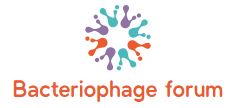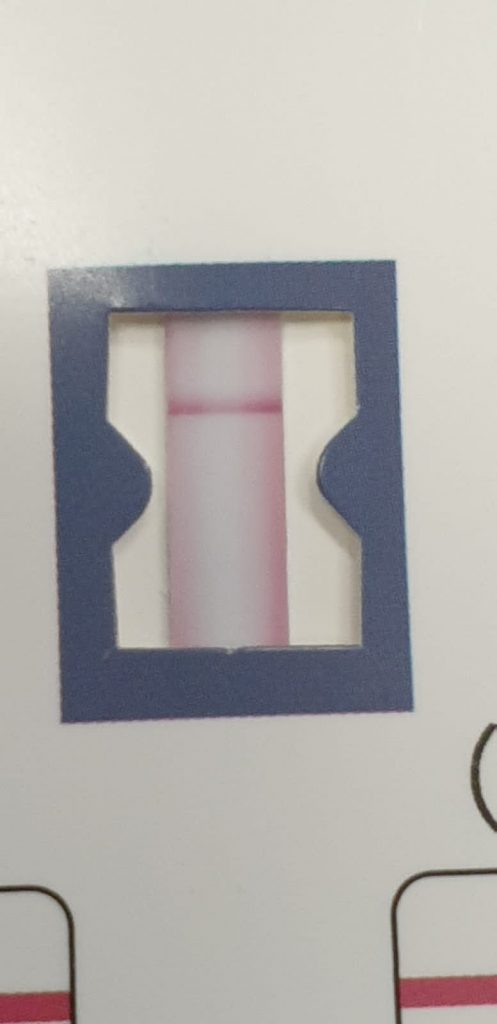Bacteriophages, viruses that infect and replicate inside prokaryotic cells are essentially the most plentiful life kinds in the atmosphere, but the overwhelming majority of them haven’t been correctly reported and even found. Almost all reported bacteriophages infecting the Enterobacteriaceae household, with Escherichia coli being the foremost topic of research, have been remoted from wastewater, sewage, and effluent sources.
In the current examine, we targeted on the distribution and biodiversity of Shigella phages in an aquatic ecosystem. While no Shigella micro organism was recovered from the Yangtze River, three lytic phages have been remoted from this ecosystem and have been subjected to organic, morphological, and genomic traits.
Comparative genomics and phylogenetic analyses demonstrated that vB _SflM_004 isolate belongs to Myoviridae household, Felixounavirus genus of Ounavirinae subfamily, vB_SdyM_006 was labeled beneath the identical household, nevertheless, it’s advised to be in a brand new genus beneath Tevenvirinae subfamily with another associated bacteriophages. vB_SsoS_008 phage belongs to the Siphoviridae household, Tunavirus genus, Tunavirinae subfamily.
The phages didn’t harbor any genes concerned in the lysogenic cycles and confirmed a excessive temperature and pH stability. The biodiversity of the remoted phages extremely means that continued isolation on non-model members of Enterobacteriaceae household is important to completely perceive bacteriophage range in aquatic environments.
An Engineered Reporter Phage for the Fluorometric Detection of Escherichia coli in Ground Beef
Despite enhanced sanitation implementations, foodborne bacterial pathogens nonetheless stay a significant risk to public well being and generate excessive prices for the meals trade. Reporter bacteriophage (phage) programs have been considered a robust expertise for diagnostic assays for his or her extraordinary specificity to focus on cells and cost-effectiveness.
Our examine launched an enzyme-based fluorescent assay for detecting the presence of E. coli utilizing the T7 phage engineered with the lacZ operon which encodes beta-galactosidase (β-gal). Both endogenous and overexpressed β-gal expression was monitored utilizing a fluorescent-based methodology with 4-methylumbelliferyl β-d-galactopyranoside (MUG) because the substrate.
The an infection of E. coli with engineered phages resulted in a detection restrict of 10 CFU/mL in floor beef juice after 7 h of incubation. In this examine, we demonstrated that the overexpression of β-gal coupled with a fluorogenic substrate can present a simple and delicate strategy to detect the potential organic contamination in meals samples. The outcomes additionally advised that this method will be utilized to detect E. coli strains remoted from environmental samples, indicating a broader vary of bacterial detection.
Analysis of a Novel Bacteriophage vB_AchrS_AchV4 Highlights the Diversity of Achromobacter Viruses
Achromobacter spp. are ubiquitous in nature and are more and more being acknowledged as rising nosocomial pathogens. Nevertheless, so far, solely 30 full genome sequences of Achromobacter phages can be found in GenBank, and practically all of these phages have been remoted on Achromobacter xylosoxidans. Here, we report the isolation and characterization of bacteriophage vB_AchrS_AchV4. To the most effective of our information, vB_AchrS_AchV4 is the primary virus remoted from Achromobacter spanius. Both vB_AchrS_AchV4 and its host, Achromobacter spanius RL_4, have been remoted in Lithuania.
VB_AchrS_AchV4 is a siphovirus, because it has an isometric head (64 ± 3.2 nm in diameter) and a non-contractile versatile tail (232 ± 5.4). The genome of vB_AchrS_AchV4 is a linear dsDNA molecule of 59,489 bp with a G+C content material of 62.8%. It accommodates no tRNA genes, but it consists of 82 protein-coding genes, of which 27 don’t have any homologues in phages. Using bioinformatics approaches, 36 vB_AchrS_AchV4 genes got a putative perform. An extra 4 have been annotated primarily based on the outcomes of LC-MS/MS.
Comparative analyses revealed that vB_AchrS_AchV4 is a singleton siphovirus with no shut relations amongst identified tailed phages. In abstract, this work not solely describes a novel and distinctive phage, but in addition advances our information of genetic range and evolution of Achromobacter bacteriophages.
Genetic and Chemical Engineering of Phages for Controlling Multidrug-Resistant Bacteria
Along with the extreme use of antibiotics, the emergence and unfold of multidrug-resistant micro organism has develop into a public well being drawback and a terrific problem vis-à-vis the management and therapy of bacterial infections. As the pure predators of micro organism, phages have reattracted researchers’ attentions. Phage remedy is considered one of essentially the most promising various methods to struggle pathogens in the post-antibiotic period. Recently, genetic and chemical engineering strategies have been utilized in phage modification.
Among them, genetic engineering consists of the expression of toxin proteins, modification of host recognition receptors, and interference of bacterial phage-resistant pathways. Chemical engineering, in the meantime, includes crosslinking phage coats with antibiotics, antimicrobial peptides, heavy steel ions, and photothermic issues. Those advances tremendously broaden the host vary of phages and improve their bactericidal effectivity, which sheds gentle on the appliance of phage remedy in the management of multidrug-resistant pathogens. This evaluate reviews on engineered phages by way of genetic and chemical approaches. Further, we current the obstacles that this novel antimicrobial has incurred.
Bacteriophages as Therapeutic and Diagnostic Vehicles in Cancer
Evolution of nanomedicine is the re-design of artificial and organic carriers to implement novel theranostic platforms. In latest years, bacteriophage analysis favors this course of, which has opened up new roads in drug and gene supply research. By displaying antibodies, peptides, or proteins on the floor of completely different bacteriophages by way of the phage show method, it’s now attainable to unravel particular molecular determinants of each most cancers cells and tumor-associated microenvironmental molecules. Downstream functions are manifold, with peptides being employed most of the occasions to functionalize drug carriers and enhance their therapeutic index.
Bacteriophages themselves have been confirmed, in this situation, to be good carriers for imaging molecules and therapeutics as nicely. Moreover, manipulation of their genetic materials to stably vehiculate suicide genes inside most cancers cells considerably modified views in gene remedy. In this evaluate, we offer examples of how amenable phages can be utilized as anticancer brokers, particularly as a result of their systemic administration is feasible. We additionally present some insights into how their immunogenic profile will be modulated and exploited in immuno-oncology for vaccine manufacturing.
Extraordinary Multi-Organismal Interactions Involving Bacteriophages, Bacteria, Fungi, and Rotifers: Quadruple Microbial Trophic Network in Water Droplets
Our observations of predatory fungi trapping rotifers in activated sludge and laboratory tradition allowed us to find a sophisticated trophic community that features predatory fungi armed with micro organism and bacteriophages and the rotifers they prey on. Such a community appears to be widespread in numerous habitats, though it stays largely unknown because of its microscopic measurement. In this examine, we remoted and recognized fungi and micro organism from activated sludge.
We additionally observed plentiful, virus-like particles in the atmosphere. The fungus developed absorptive hyphae inside the prey. The micro organism confirmed the power to enter and exit from the hyphae (e.g., from the traps into the caught prey). Our observations point out that the micro organism and the fungus share vitamins obtained from the rotifer. To slender the vary of bacterial strains remoted from the mycelium, the consequences of micro organism supernatants and lysed micro organism have been studied. Bacteria remoted from the fungus have been succesful of immobilizing the rotifer.
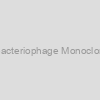 Mouse Anti M13 Bacteriophage Monoclonal Antibody,Biotin |
|
DMABT-54838MM |
Creative Diagnostics |
0.1 mg |
EUR 1070.4 |
) M13 Bacteriophage Antibody (Biotin) |
|
abx413451-01mg |
Abbexa |
0.1 mg |
EUR 1212 |
|
|
) M13 Bacteriophage Antibody (Biotin) |
|
GWB-2042A8 |
GenWay Biotech |
0.1 mg |
Ask for price |
) M13 Bacteriophage Antibody (Biotin) |
|
abx413451-200l |
Abbexa |
200 µl |
EUR 975 |
 Antibody) Bacteriophage M13 Capsid Protein G8P (VIII) Antibody |
|
abx375032-96tests |
Abbexa |
96 tests |
EUR 225 |
 Tail virion protein G9P) Recombinant Enterobacteria phage M13 (Bacteriophage M13) Tail virion protein G9P |
|
AP74534 |
SAB |
1mg |
EUR 2826 |
|
|
 OASA03462-100UG - M13 Bacteriophage Antibody - Biotin Conjugated |
|
OASA03462-100UG |
Aviva Systems Biology |
0.1mg |
EUR 729 |
|
|
) OPCA04304-1MG - Tail virion protein G9P Recombinant Protein (Bacteriophage M13) |
|
OPCA04304-1MG |
Aviva Systems Biology |
1mg |
EUR 1977 |
|
|
) OPCA04304-20UG - Tail virion protein G9P Recombinant Protein (Bacteriophage M13) |
|
OPCA04304-20UG |
Aviva Systems Biology |
20ug |
EUR 400 |
|
|
) OPCA04304-100UG - Tail virion protein G9P Recombinant Protein (Bacteriophage M13) |
|
OPCA04304-100UG |
Aviva Systems Biology |
100ug |
EUR 586 |
|
|
, 1.0 ML) Bacteriophage MS2 (1E9 pfu/ml), 1.0 ML |
|
NAT41663-1E9-1000 |
The Native Antigen Company |
1.0 |
EUR 288.32 |
|
Description: MS2 phage produced in E. coli and diluted in SM buffer. The titer was determined before the freeze-down of product. Note that titer can vary up to 40% from batch to batch. |
, 1.0 ML) Bacteriophage MS2 (5E10 pfu/ml), 1.0 ML |
|
NAT41663-5E10-1000 |
The Native Antigen Company |
1.0 |
EUR 790.97 |
|
Description: MS2 phage produced in E. coli and diluted in SM buffer. The titer was determined before the freeze-down of product. Note that titer can vary up to 40% from batch to batch. |
 Bacteriophage-Derived Deoxyribonucleic Acid |
|
IBPHDNA2MG |
Innovative research |
each |
EUR 545 |
|
|
|
Description: Bacteriophage-Derived Deoxyribonucleic Acid |
 Bacteriophage-Derived Deoxyribonucleic Acid |
|
IBPHDNA500UG |
Innovative research |
each |
EUR 174 |
|
|
|
Description: Bacteriophage-Derived Deoxyribonucleic Acid |
) OPCA04339-1MG - WAC Recombinant Protein (Bacteriophage T4) |
|
OPCA04339-1MG |
Aviva Systems Biology |
1mg |
EUR 1977 |
|
|
) OPCA04339-20UG - WAC Recombinant Protein (Bacteriophage T4) |
|
OPCA04339-20UG |
Aviva Systems Biology |
20ug |
EUR 400 |
|
|
) OPCA04339-100UG - WAC Recombinant Protein (Bacteriophage T4) |
|
OPCA04339-100UG |
Aviva Systems Biology |
100ug |
EUR 586 |
|
|
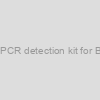 genesig Real-time PCR detection kit for Bacteriophage MS2 |
|
Z-Path-Bacteriophage-MS2 |
Novacyt Group |
150 tests |
EUR 808 |
|
Description: Bacteriophage MS2 |
 Recombinant Bacteriophage Attachment protein G3P Protein, His, Yeast-10ug |
|
QP9483-ye-10ug |
EnQuireBio |
10ug |
EUR 434.4 |
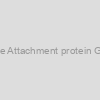 Recombinant Bacteriophage Attachment protein G3P Protein, His, Yeast-1mg |
|
QP9483-ye-1mg |
EnQuireBio |
1mg |
EUR 3296.4 |
 Recombinant Bacteriophage Attachment protein G3P Protein, His, Yeast-50ug |
|
QP9483-ye-50ug |
EnQuireBio |
50ug |
EUR 576 |
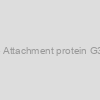 Recombinant Bacteriophage Attachment protein G3P Protein, His, Yeast-100ug |
|
QP9483-ye-100ug |
EnQuireBio |
100ug |
EUR 945.6 |
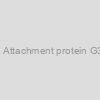 Recombinant Bacteriophage Attachment protein G3P Protein, His, Yeast-200ug |
|
QP9483-ye-200ug |
EnQuireBio |
200ug |
EUR 1512 |
 Recombinant Bacteriophage Attachment protein G3P Protein, His, Yeast-500ug |
|
QP9483-ye-500ug |
EnQuireBio |
500ug |
EUR 2164.8 |
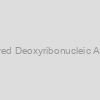 Bacteriophage-Derived Deoxyribonucleic Acid BstE II Fragment |
|
IBPHDNABIIFG100UG |
Innovative research |
each |
EUR 148 |
|
|
|
Description: Bacteriophage-Derived Deoxyribonucleic Acid BstE II Fragment |
 Bacteriophage-Derived Deoxyribonucleic Acid BstE II Fragment |
|
IBPHDNABIIFG500UG |
Innovative research |
each |
EUR 577 |
|
|
|
Description: Bacteriophage-Derived Deoxyribonucleic Acid BstE II Fragment |
 Bacteriophage-Derived Deoxyribonucleic Acid EcoR I Fragment |
|
IBPHDNAEIFG100UG |
Innovative research |
each |
EUR 99 |
|
|
|
Description: Bacteriophage-Derived Deoxyribonucleic Acid EcoR I Fragment |
 Bacteriophage-Derived Deoxyribonucleic Acid EcoR I Fragment |
|
IBPHDNAEIFG500UG |
Innovative research |
each |
EUR 334 |
|
|
|
Description: Bacteriophage-Derived Deoxyribonucleic Acid EcoR I Fragment |
 Bacteriophage-Derived Deoxyribonucleic Acid Hind III Fragment |
|
IBPHDNAHIIIFG100UG |
Innovative research |
each |
EUR 99 |
|
|
|
Description: Bacteriophage-Derived Deoxyribonucleic Acid Hind III Fragment |
 Bacteriophage-Derived Deoxyribonucleic Acid Hind III Fragment |
|
IBPHDNAHIIIFG500UG |
Innovative research |
each |
EUR 334 |
|
|
|
Description: Bacteriophage-Derived Deoxyribonucleic Acid Hind III Fragment |
) OPCA04293-1MG - T4 Lysozyme Recombinant Protein (Bacteriophage T4) |
|
OPCA04293-1MG |
Aviva Systems Biology |
1mg |
EUR 1977 |
|
|
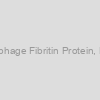 Recombinant Bacteriophage Fibritin Protein, His-SUMO, E.coli-1mg |
|
QP7036-1mg |
EnQuireBio |
1mg |
EUR 3037.2 |
 Recombinant Bacteriophage Tail virion protein G9P Protein, His-SUMO, E.coli-1mg |
|
QP6944-1mg |
EnQuireBio |
1mg |
EUR 3037.2 |
) OPCA04293-100UG - T4 Lysozyme Recombinant Protein (Bacteriophage T4) |
|
OPCA04293-100UG |
Aviva Systems Biology |
100ug |
EUR 586 |
|
|
) OPCA04293-20UG - T4 Lysozyme Recombinant Protein (Bacteriophage T4) |
|
OPCA04293-20UG |
Aviva Systems Biology |
20ug |
EUR 400 |
|
|
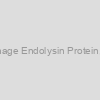 Recombinant Bacteriophage Endolysin Protein, His-SUMO, E.coli-10ug |
|
QP7339-ec-10ug |
EnQuireBio |
10ug |
EUR 391.2 |
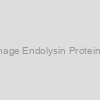 Recombinant Bacteriophage Endolysin Protein, His-SUMO, E.coli-1mg |
|
QP7339-ec-1mg |
EnQuireBio |
1mg |
EUR 2763.6 |
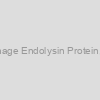 Recombinant Bacteriophage Endolysin Protein, His-SUMO, E.coli-50ug |
|
QP7339-ec-50ug |
EnQuireBio |
50ug |
EUR 522 |
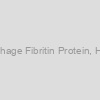 Recombinant Bacteriophage Fibritin Protein, His-SUMO, E.coli-100ug |
|
QP7036-100ug |
EnQuireBio |
100ug |
EUR 925.2 |
 Recombinant Bacteriophage Fibritin Protein, His-SUMO, E.coli-10ug |
|
QP7036-10ug |
EnQuireBio |
10ug |
EUR 426 |
 Recombinant Bacteriophage Fibritin Protein, His-SUMO, E.coli-200ug |
|
QP7036-200ug |
EnQuireBio |
200ug |
EUR 1468.8 |
 Recombinant Bacteriophage Fibritin Protein, His-SUMO, E.coli-500ug |
|
QP7036-500ug |
EnQuireBio |
500ug |
EUR 1936.8 |
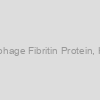 Recombinant Bacteriophage Fibritin Protein, His-SUMO, E.coli-50ug |
|
QP7036-50ug |
EnQuireBio |
50ug |
EUR 567.6 |
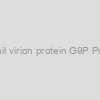 Recombinant Bacteriophage Tail virion protein G9P Protein, His-SUMO, E.coli-100ug |
|
QP6944-100ug |
EnQuireBio |
100ug |
EUR 925.2 |
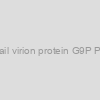 Recombinant Bacteriophage Tail virion protein G9P Protein, His-SUMO, E.coli-10ug |
|
QP6944-10ug |
EnQuireBio |
10ug |
EUR 426 |
 Recombinant Bacteriophage Tail virion protein G9P Protein, His-SUMO, E.coli-200ug |
|
QP6944-200ug |
EnQuireBio |
200ug |
EUR 1468.8 |
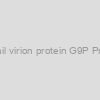 Recombinant Bacteriophage Tail virion protein G9P Protein, His-SUMO, E.coli-500ug |
|
QP6944-500ug |
EnQuireBio |
500ug |
EUR 1936.8 |
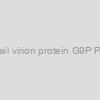 Recombinant Bacteriophage Tail virion protein G9P Protein, His-SUMO, E.coli-50ug |
|
QP6944-50ug |
EnQuireBio |
50ug |
EUR 567.6 |
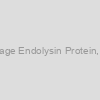 Recombinant Bacteriophage Endolysin Protein, His-SUMO, E.coli-100ug |
|
QP7339-ec-100ug |
EnQuireBio |
100ug |
EUR 848.4 |
 Recombinant Bacteriophage Endolysin Protein, His-SUMO, E.coli-200ug |
|
QP7339-ec-200ug |
EnQuireBio |
200ug |
EUR 1338 |
 Recombinant Bacteriophage Endolysin Protein, His-SUMO, E.coli-500ug |
|
QP7339-ec-500ug |
EnQuireBio |
500ug |
EUR 1816.8 |
 Recombinant Bacteriophage Single-stranded DNA-binding protein gp2.5 Protein, His, Yeast-10ug |
|
QP9695-ye-10ug |
EnQuireBio |
10ug |
EUR 619.2 |
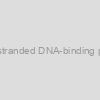 Recombinant Bacteriophage Single-stranded DNA-binding protein gp2.5 Protein, His, Yeast-1mg |
|
QP9695-ye-1mg |
EnQuireBio |
1mg |
EUR 3481.2 |
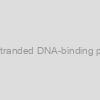 Recombinant Bacteriophage Single-stranded DNA-binding protein gp2.5 Protein, His, Yeast-50ug |
|
QP9695-ye-50ug |
EnQuireBio |
50ug |
EUR 771.6 |
 Recombinant Bacteriophage Shiga-like toxin 2 subunit B Protein, His, Yeast-1mg |
|
QP7305-ye-1mg |
EnQuireBio |
1mg |
EUR 3296.4 |
 Recombinant Bacteriophage Shiga-like toxin 1 subunit B Protein, His, Yeast-1mg |
|
QP6941-ye-1mg |
EnQuireBio |
1mg |
EUR 3296.4 |
 Recombinant Bacteriophage Single-stranded DNA-binding protein gp2.5 Protein, His, Yeast-100ug |
|
QP9695-ye-100ug |
EnQuireBio |
100ug |
EUR 1153.2 |
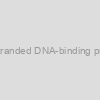 Recombinant Bacteriophage Single-stranded DNA-binding protein gp2.5 Protein, His, Yeast-200ug |
|
QP9695-ye-200ug |
EnQuireBio |
200ug |
EUR 1730.4 |
 Recombinant Bacteriophage Single-stranded DNA-binding protein gp2.5 Protein, His, Yeast-500ug |
|
QP9695-ye-500ug |
EnQuireBio |
500ug |
EUR 2340 |
 Recombinant Bacteriophage Recombination protein uvsY Protein, His-SUMO, E.coli-1mg |
|
QP7417-ec-1mg |
EnQuireBio |
1mg |
EUR 2763.6 |
 Recombinant Bacteriophage Shiga-like toxin 2 subunit B Protein, His, Yeast-100ug |
|
QP7305-ye-100ug |
EnQuireBio |
100ug |
EUR 945.6 |
 Recombinant Bacteriophage Shiga-like toxin 2 subunit B Protein, His, Yeast-10ug |
|
QP7305-ye-10ug |
EnQuireBio |
10ug |
EUR 434.4 |
 Recombinant Bacteriophage Shiga-like toxin 2 subunit B Protein, His, Yeast-200ug |
|
QP7305-ye-200ug |
EnQuireBio |
200ug |
EUR 1512 |
 Recombinant Bacteriophage Shiga-like toxin 2 subunit B Protein, His, Yeast-500ug |
|
QP7305-ye-500ug |
EnQuireBio |
500ug |
EUR 2164.8 |
 Recombinant Bacteriophage Shiga-like toxin 2 subunit B Protein, His, Yeast-50ug |
|
QP7305-ye-50ug |
EnQuireBio |
50ug |
EUR 576 |
 Recombinant Bacteriophage Shiga-like toxin 1 subunit B Protein, His, Yeast-100ug |
|
QP6941-ye-100ug |
EnQuireBio |
100ug |
EUR 945.6 |
 Recombinant Bacteriophage Shiga-like toxin 1 subunit B Protein, His, Yeast-10ug |
|
QP6941-ye-10ug |
EnQuireBio |
10ug |
EUR 434.4 |
 Recombinant Bacteriophage Shiga-like toxin 1 subunit B Protein, His, Yeast-200ug |
|
QP6941-ye-200ug |
EnQuireBio |
200ug |
EUR 1512 |
 Recombinant Bacteriophage Shiga-like toxin 1 subunit B Protein, His, Yeast-500ug |
|
QP6941-ye-500ug |
EnQuireBio |
500ug |
EUR 2164.8 |
 Recombinant Bacteriophage Shiga-like toxin 1 subunit B Protein, His, Yeast-50ug |
|
QP6941-ye-50ug |
EnQuireBio |
50ug |
EUR 576 |
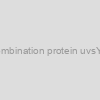 Recombinant Bacteriophage Recombination protein uvsY Protein, His-SUMO, E.coli-100ug |
|
QP7417-ec-100ug |
EnQuireBio |
100ug |
EUR 848.4 |
 Recombinant Bacteriophage Recombination protein uvsY Protein, His-SUMO, E.coli-10ug |
|
QP7417-ec-10ug |
EnQuireBio |
10ug |
EUR 391.2 |
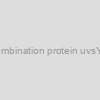 Recombinant Bacteriophage Recombination protein uvsY Protein, His-SUMO, E.coli-200ug |
|
QP7417-ec-200ug |
EnQuireBio |
200ug |
EUR 1338 |
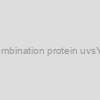 Recombinant Bacteriophage Recombination protein uvsY Protein, His-SUMO, E.coli-500ug |
|
QP7417-ec-500ug |
EnQuireBio |
500ug |
EUR 1816.8 |
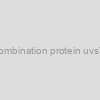 Recombinant Bacteriophage Recombination protein uvsY Protein, His-SUMO, E.coli-50ug |
|
QP7417-ec-50ug |
EnQuireBio |
50ug |
EUR 522 |
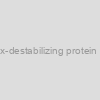 Recombinant Bacteriophage Helix-destabilizing protein Protein, His-SUMO, E.coli-100ug |
|
QP7414-ec-100ug |
EnQuireBio |
100ug |
EUR 848.4 |
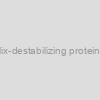 Recombinant Bacteriophage Helix-destabilizing protein Protein, His-SUMO, E.coli-10ug |
|
QP7414-ec-10ug |
EnQuireBio |
10ug |
EUR 391.2 |
 Recombinant Bacteriophage Helix-destabilizing protein Protein, His-SUMO, E.coli-1mg |
|
QP7414-ec-1mg |
EnQuireBio |
1mg |
EUR 2763.6 |
 Recombinant Bacteriophage Helix-destabilizing protein Protein, His-SUMO, E.coli-200ug |
|
QP7414-ec-200ug |
EnQuireBio |
200ug |
EUR 1338 |
 Recombinant Bacteriophage Helix-destabilizing protein Protein, His-SUMO, E.coli-500ug |
|
QP7414-ec-500ug |
EnQuireBio |
500ug |
EUR 1816.8 |
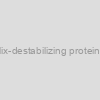 Recombinant Bacteriophage Helix-destabilizing protein Protein, His-SUMO, E.coli-50ug |
|
QP7414-ec-50ug |
EnQuireBio |
50ug |
EUR 522 |
 Recombinant Bacteriophage Shiga-like toxin 2 subunit B Protein, His-SUMO, E.coli-10ug |
|
QP7305-ec-10ug |
EnQuireBio |
10ug |
EUR 391.2 |
 Recombinant Bacteriophage Shiga-like toxin 2 subunit B Protein, His-SUMO, E.coli-1mg |
|
QP7305-ec-1mg |
EnQuireBio |
1mg |
EUR 2763.6 |
 Recombinant Bacteriophage Shiga-like toxin 2 subunit B Protein, His-SUMO, E.coli-50ug |
|
QP7305-ec-50ug |
EnQuireBio |
50ug |
EUR 522 |
 Recombinant Bacteriophage Shiga-like toxin 1 subunit B Protein, His-SUMO, E.coli-10ug |
|
QP6941-ec-10ug |
EnQuireBio |
10ug |
EUR 391.2 |
 Recombinant Bacteriophage Shiga-like toxin 1 subunit B Protein, His-SUMO, E.coli-1mg |
|
QP6941-ec-1mg |
EnQuireBio |
1mg |
EUR 2763.6 |
 Recombinant Bacteriophage Shiga-like toxin 1 subunit B Protein, His-SUMO, E.coli-50ug |
|
QP6941-ec-50ug |
EnQuireBio |
50ug |
EUR 522 |
 Recombinant Bacteriophage Recombination and repair protein Protein, His-SUMO, E.coli-100ug |
|
QP7355-ec-100ug |
EnQuireBio |
100ug |
EUR 848.4 |
 Recombinant Bacteriophage Recombination and repair protein Protein, His-SUMO, E.coli-10ug |
|
QP7355-ec-10ug |
EnQuireBio |
10ug |
EUR 391.2 |
 Recombinant Bacteriophage Recombination and repair protein Protein, His-SUMO, E.coli-1mg |
|
QP7355-ec-1mg |
EnQuireBio |
1mg |
EUR 2763.6 |
 Recombinant Bacteriophage Recombination and repair protein Protein, His-SUMO, E.coli-200ug |
|
QP7355-ec-200ug |
EnQuireBio |
200ug |
EUR 1338 |
 Recombinant Bacteriophage Recombination and repair protein Protein, His-SUMO, E.coli-500ug |
|
QP7355-ec-500ug |
EnQuireBio |
500ug |
EUR 1816.8 |
 Recombinant Bacteriophage Recombination and repair protein Protein, His-SUMO, E.coli-50ug |
|
QP7355-ec-50ug |
EnQuireBio |
50ug |
EUR 522 |
 Recombinant Bacteriophage Shiga-like toxin 2 subunit B Protein, His-SUMO, E.coli-100ug |
|
QP7305-ec-100ug |
EnQuireBio |
100ug |
EUR 848.4 |
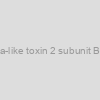 Recombinant Bacteriophage Shiga-like toxin 2 subunit B Protein, His-SUMO, E.coli-200ug |
|
QP7305-ec-200ug |
EnQuireBio |
200ug |
EUR 1338 |
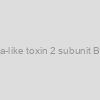 Recombinant Bacteriophage Shiga-like toxin 2 subunit B Protein, His-SUMO, E.coli-500ug |
|
QP7305-ec-500ug |
EnQuireBio |
500ug |
EUR 1816.8 |
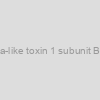 Recombinant Bacteriophage Shiga-like toxin 1 subunit B Protein, His-SUMO, E.coli-100ug |
|
QP6941-ec-100ug |
EnQuireBio |
100ug |
EUR 848.4 |
 Recombinant Bacteriophage Shiga-like toxin 1 subunit B Protein, His-SUMO, E.coli-200ug |
|
QP6941-ec-200ug |
EnQuireBio |
200ug |
EUR 1338 |
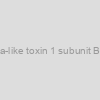 Recombinant Bacteriophage Shiga-like toxin 1 subunit B Protein, His-SUMO, E.coli-500ug |
|
QP6941-ec-500ug |
EnQuireBio |
500ug |
EUR 1816.8 |
 Antibody) Acyrthosiphon Pisum Secondary Endosymbiont Phage 1 Putative Protein p39 (Bacteriophage APSE-1 VP39) Antibody |
|
abx349511-96tests |
Abbexa |
96 tests |
EUR 250 |
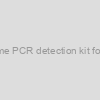 genesig Std Real-time PCR detection kit for Bacteriophag MS2 |
|
Z-Path-Bacteriophage-MS2-std |
Novacyt Group |
150 tests |
EUR 602 |
|
|
|
Description: Bacteriophage MS2 |
 Mouse Anti-F. tularensis LVS Bacterioferritin monoclonal antibody |
|
CABT-B217 |
Creative Diagnostics |
100 μg |
EUR 920.4 |
 Mouse antibody for Gram + bacteria LTA |
|
3802 |
Virostat |
100 ug |
EUR 386.26 |
|
Description: This is purified Mouse monoclonal antibody against Gram + bacteria LTA for WB, ELISA. |
 Mouse antibody for Gram + bacteria LTA |
|
3803 |
Virostat |
100 ug |
EUR 386.26 |
|
Description: This is purified Mouse monoclonal antibody against Gram + bacteria LTA for WB, ELISA. |
 Mouse antibody for Gram + bacteria LTA |
|
3811 |
Virostat |
100 ug |
EUR 386.26 |
|
Description: This is purified Mouse monoclonal antibody against Gram + bacteria LTA for WB, ELISA. |
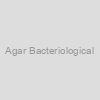 Agar Bacteriological |
|
abx082171-500g |
Abbexa |
500 g |
EUR 693.6 |
|
|
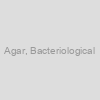 Agar, Bacteriological |
|
30620001-1 |
Glycomatrix |
500 g |
EUR 69.32 |
 Agar, Bacteriological |
|
30620001-2 |
Glycomatrix |
1 kg |
EUR 122.03 |
 Agar, Bacteriological |
|
30620001-3 |
Glycomatrix |
2.5 kg |
EUR 261.45 |
 Agar, Bacteriological |
|
30620001-4 |
Glycomatrix |
5 kg |
EUR 487.8 |
 Agar, Bacteriological |
|
30620001-5 |
Glycomatrix |
100 g |
EUR 27.06 |
) Agar (bacteriological) |
|
A2530-2000000 |
ApexBio |
2 kg |
EUR 459.6 |
|
Description: microbiological culture mediapasses growth performance tests with known ATCC strainsWilliams, S., Slatko, B., and McCarrey, J., Laboratory Investigations in Molecular BiologyJones and Bartlett, Sudbury, MA (2006)store dry at room temperature, CAS 9002-18-0 |
) Agar (bacteriological) |
|
A2530-500000 |
ApexBio |
500 g |
EUR 170.4 |
|
Description: microbiological culture mediapasses growth performance tests with known ATCC strainsWilliams, S., Slatko, B., and McCarrey, J., Laboratory Investigations in Molecular BiologyJones and Bartlett, Sudbury, MA (2006)store dry at room temperature, CAS 9002-18-0 |
 Bile, Bacteriological |
|
RM621-100G |
EWC Diagnostics |
1 unit |
EUR 20.94 |
|
Description: Bile, Bacteriological |
 Bile, Bacteriological |
|
RM621-500G |
EWC Diagnostics |
1 unit |
EUR 78.57 |
|
Description: Bile, Bacteriological |
 Bacteriological Agar |
|
abx299906-100g |
Abbexa |
100 µg |
Ask for price |
 Bacteriological Agar |
|
abx299906-20g |
Abbexa |
20 µg |
EUR 237.5 |
 Bacteriological Agar |
|
abx299906-50g |
Abbexa |
50 µg |
EUR 312.5 |
 Agar Powder for Bacteriology |
|
abx090681-500g |
Abbexa |
500 g |
EUR 260.4 |
|
|
 AATCC Bacteriostasis Agar |
|
M231-500G |
EWC Diagnostics |
1 unit |
EUR 46.58 |
|
Description: AATCC Bacteriostasis Agar |
 Agar Powder for Bacteriology |
|
abx090681-100l |
Abbexa |
100 µl |
EUR 150 |
 Agar Powder for Bacteriology |
|
abx090681-1ml |
Abbexa |
1 ml |
Ask for price |
 Agar Powder for Bacteriology |
|
abx090681-200l |
Abbexa |
200 µl |
Ask for price |
 Peptone Bacteriological |
|
abx082173-500g |
Abbexa |
500 g |
EUR 393.6 |
|
|
 Peptone, bacteriological |
|
A2535-500000 |
ApexBio |
500 g |
EUR 142.8 |
|
Description: Enzymatic digest of protein. For use in preparing microbiological culture media. Peptone has been heated a minimum of 80°C for 1 hour, including minimum of 105°C for 30 minutes and dried at a minimum of 140°C. Store in a cool dry place. |
 Peptone, Bacteriological |
|
RM001-10KG |
EWC Diagnostics |
1 unit |
EUR 472.29 |
|
Description: Peptone, Bacteriological |
 Peptone, Bacteriological |
|
RM001-1KG |
EWC Diagnostics |
1 unit |
EUR 54.48 |
|
Description: Peptone, Bacteriological |
 Peptone, Bacteriological |
|
RM001-2.5KG |
EWC Diagnostics |
1 unit |
EUR 125.71 |
|
Description: Peptone, Bacteriological |
 Peptone, Bacteriological |
|
RM001-500G |
EWC Diagnostics |
1 unit |
EUR 28.01 |
|
Description: Peptone, Bacteriological |
 Peptone, Bacteriological |
|
RM001-5KG |
EWC Diagnostics |
1 unit |
EUR 239.25 |
|
Description: Peptone, Bacteriological |
 Peptone Bacteriological |
|
abx082173-100l |
Abbexa |
100 µl |
EUR 137.5 |
 Peptone Bacteriological |
|
abx082173-1ml |
Abbexa |
1 ml |
Ask for price |
 Peptone Bacteriological |
|
abx082173-200l |
Abbexa |
200 µl |
Ask for price |
 AATCC Bacteriostasis HiVeg Agar |
|
MV231-500G |
EWC Diagnostics |
1 unit |
EUR 46.58 |
|
Description: AATCC Bacteriostasis HiVeg Agar |
 Peptone Type I, Bacteriological |
|
RM667-10KG |
EWC Diagnostics |
1 unit |
EUR 251.53 |
|
Description: Peptone Type I, Bacteriological |
 Peptone Type I, Bacteriological |
|
RM667-500G |
EWC Diagnostics |
1 unit |
EUR 16.24 |
|
Description: Peptone Type I, Bacteriological |
) Peptone Type I (Bacteriological) |
|
RM667-5KG |
EWC Diagnostics |
1 unit |
EUR 126.92 |
|
Description: Peptone Type I (Bacteriological) |
 AATCC Bacteriostasis HiVeg Broth |
|
MV221-500G |
EWC Diagnostics |
1 unit |
EUR 44.15 |
|
Description: AATCC Bacteriostasis HiVeg Broth |
 Peptone Type III, Bacteriological |
|
RM7709-500G |
EWC Diagnostics |
1 unit |
EUR 17.56 |
|
Description: Peptone Type III, Bacteriological |
 Gelatin for Bacteriological Media |
|
40700016-1 |
Glycomatrix |
500 g |
EUR 90.74 |
 Gelatin for Bacteriological Media |
|
40700016-2 |
Glycomatrix |
1 kg |
EUR 154.1 |
) AATCC Bacteriostasis Broth (FDA Broth) |
|
M221-500G |
EWC Diagnostics |
1 unit |
EUR 44.15 |
|
Description: AATCC Bacteriostasis Broth (FDA Broth) |
 Agar powder, Bacteriological grade |
|
GRM026-100G |
EWC Diagnostics |
1 unit |
EUR 18.85 |
|
Description: Agar powder, Bacteriological grade |
 Agar powder, Bacteriological grade |
|
GRM026-25KG |
EWC Diagnostics |
1 unit |
Ask for price |
|
Description: Agar powder, Bacteriological grade |
 Agar powder, Bacteriological grade |
|
GRM026-500G |
EWC Diagnostics |
1 unit |
EUR 67.04 |
|
Description: Agar powder, Bacteriological grade |
 Agar powder, Bacteriological grade |
|
GRM026-5KG |
EWC Diagnostics |
1 unit |
EUR 599 |
|
Description: Agar powder, Bacteriological grade |
 Agar powder, Bacteriological grade |
|
GRM026P-500G |
EWC Diagnostics |
1 unit |
EUR 82.34 |
|
Description: Agar powder, Bacteriological grade |
 Peptone Type I, Bacteriological, Granula |
|
RMG667-5KG |
EWC Diagnostics |
1 unit |
EUR 161.88 |
|
Description: Peptone Type I, Bacteriological, Granula |
 HydraAgar™ Agar, Bacteriological Grade, 500g |
|
R9002 |
ACTGene |
500g |
EUR 104.26 |
 HydraAgar? Agar, Bacteriological Grade, 1kg |
|
R9002-1kg |
ACTGene |
each |
EUR 320.4 |
 HydraAgar? Agar, Bacteriological Grade, 500g |
|
R9002-500g |
ACTGene |
each |
EUR 204 |
 Lactose, monohydrate, Bacteriological gr |
|
RM565-500G |
EWC Diagnostics |
1 unit |
Ask for price |
|
Description: Lactose, monohydrate, Bacteriological gr |
 Peptone Type I,Bacteriological granulate |
|
RMG667-500G |
EWC Diagnostics |
1 unit |
EUR 17.83 |
|
Description: Peptone Type I,Bacteriological granulate |
 Mouse antibody for Neisseria gonorrhoeae intact bacteria |
|
6142 |
Virostat |
100 ug |
EUR 386.26 |
|
Description: This is purified Mouse monoclonal antibody against Neisseria gonorrhoeae intact bacteria for WB, ELISA. |
 Mouse antibody for Neisseria gonorrhoeae intact bacteria |
|
6144 |
Virostat |
100 ug |
EUR 386.26 |
|
Description: This is purified Mouse monoclonal antibody against Neisseria gonorrhoeae intact bacteria for WB, ELISA. |
 Mouse antibody for Neisseria gonorrhoeae intact bacteria |
|
6145 |
Virostat |
100 ug |
EUR 386.26 |
|
Description: This is purified Mouse monoclonal antibody against Neisseria gonorrhoeae intact bacteria for WB, ELISA. |
 HydraAgar™ UltraPure Agar, Bacteriological Grade, 500g |
|
R9002UP |
ACTGene |
500g |
EUR 125.11 |
 HydraAgar? UltraPure Agar, Bacteriological Grade, 1kg |
|
R9002UP-1kg |
ACTGene |
each |
EUR 348 |
 HydraAgar? UltraPure Agar, Bacteriological Grade, 500g |
|
R9002UP-500g |
ACTGene |
each |
EUR 232.8 |
 GP8 |
|
ABL-TC0230 |
AcceGen |
1 vial |
Ask for price |
|
Description: GP8 Cell Line is from mouse; Strain: C57BL/6; Tissue: skin; Morphology: fibroblast-like; Profile: The mouse SV cell line rescued with a human normal behta-galactosidase gene. |
 Gram Positive Bacteria mouse monoclonal antibody, clone BDI813, Purified |
|
AM00856PU-N |
Origene Technologies GmbH |
1 mg |
Ask for price |
 Gram Positive Bacteria mouse monoclonal antibody, clone BDI380, Purified |
|
AM00857PU-N |
Origene Technologies GmbH |
1 mg |
Ask for price |
) Recombinant Streptococcus Faecium Bacteriocin E50-52 Protein (aa 1-39) |
|
VAng-Cr7604-1mgEcoli |
Creative Biolabs |
1 mg (E. coli) |
EUR 2964 |
|
Description: Streptococcus Faecium Bacteriocin E50-52, recombinant protein. |
) Recombinant Streptococcus Faecium Bacteriocin E50-52 Protein (aa 1-39) |
|
VAng-Cr7604-500gEcoli |
Creative Biolabs |
500 µg (E. coli) |
EUR 2122.8 |
|
Description: Streptococcus Faecium Bacteriocin E50-52, recombinant protein. |
) Recombinant Streptococcus Faecium Bacteriocin E50-52 Protein (aa 1-39) |
|
VAng-Cr7604-50gEcoli |
Creative Biolabs |
50 µg (E. coli) |
EUR 1479.6 |
|
Description: Streptococcus Faecium Bacteriocin E50-52, recombinant protein. |
) Recombinant Streptococcus Mutans Bacteriocin mutacin F-59.1 Protein (aa 1-22) |
|
VAng-Cr7672-1mgEcoli |
Creative Biolabs |
1 mg (E. coli) |
EUR 2848.8 |
|
Description: Streptococcus Mutans Bacteriocin mutacin F-59.1, recombinant protein. |
) Recombinant Streptococcus Mutans Bacteriocin mutacin F-59.1 Protein (aa 1-22) |
|
VAng-Cr7672-500gEcoli |
Creative Biolabs |
500 µg (E. coli) |
EUR 2023.2 |
|
Description: Streptococcus Mutans Bacteriocin mutacin F-59.1, recombinant protein. |
) Recombinant Streptococcus Mutans Bacteriocin mutacin F-59.1 Protein (aa 1-22) |
|
VAng-Cr7672-50gEcoli |
Creative Biolabs |
50 µg (E. coli) |
EUR 1413.6 |
|
Description: Streptococcus Mutans Bacteriocin mutacin F-59.1, recombinant protein. |
) Recombinant Pediococcus acidilactici Bacteriocin pediocin PA-1 (pedA) |
|
CSB-EP326889PEC |
Cusabio |
11038 mg |
Ask for price |
, partial) Recombinant Halobacterium halobium Bacteriorhodopsin (bop), partial |
|
CSB-EP329315HBH1 |
Cusabio |
2962 mg |
Ask for price |
 ,partial) Recombinant Halobacterium halobium Bacteriorhodopsin (bop) ,partial |
|
RPC27102-100ug |
Biomatik Corporation |
100ug |
EUR 801.9 |
 ,partial) Recombinant Halobacterium halobium Bacteriorhodopsin (bop) ,partial |
|
RPC27102-1mg |
Biomatik Corporation |
1mg |
EUR 2885.2 |
 ,partial) Recombinant Halobacterium halobium Bacteriorhodopsin (bop) ,partial |
|
RPC27102-20ug |
Biomatik Corporation |
20ug |
EUR 448.1 |
) Recombinant Streptococcus Faecium Bacteriocin enterocin-M Protein (aa 1-38) |
|
VAng-Cr7605-1mgEcoli |
Creative Biolabs |
1 mg (E. coli) |
EUR 2964 |
|
Description: Streptococcus Faecium Bacteriocin enterocin-M, recombinant protein. |
) Recombinant Streptococcus Faecium Bacteriocin enterocin-M Protein (aa 1-38) |
|
VAng-Cr7605-500gEcoli |
Creative Biolabs |
500 µg (E. coli) |
EUR 2106 |
|
Description: Streptococcus Faecium Bacteriocin enterocin-M, recombinant protein. |
) Recombinant Streptococcus Faecium Bacteriocin enterocin-M Protein (aa 1-38) |
|
VAng-Cr7605-50gEcoli |
Creative Biolabs |
50 µg (E. coli) |
EUR 1479.6 |
|
Description: Streptococcus Faecium Bacteriocin enterocin-M, recombinant protein. |
 Polyclonal Antibody (Mouse)) Bactericidal/Permeability Increasing Protein (BPI) Polyclonal Antibody (Mouse) |
|
4-PAB234Mu01 |
Cloud-Clone |
-
Ask for price
-
Ask for price
-
Ask for price
-
Ask for price
-
Ask for price
|
- 100ul
- 10ml
- 1ml
- 200ul
- 20ul
|
|
|
|
Description: A Rabbit polyclonal antibody against Mouse Bactericidal/Permeability Increasing Protein (BPI) |
 Mouse Bactericidal/Permeability Increasing Protein ELISA Kit |
|
IMSBPIKT |
Innovative research |
each |
EUR 718 |
|
|
|
Description: Mouse Bactericidal/Permeability Increasing Protein ELISA Kit |
 Polyclonal Antibody (Mouse), PE) Bactericidal/Permeability Increasing Protein (BPI) Polyclonal Antibody (Mouse), PE |
|
4-PAB234Mu01-PE |
Cloud-Clone |
-
Ask for price
-
Ask for price
-
Ask for price
-
Ask for price
-
Ask for price
|
- 100ul
- 10ml
- 1ml
- 200ul
- 20ul
|
|
|
|
Description: A Rabbit polyclonal antibody against Mouse Bactericidal/Permeability Increasing Protein (BPI). This antibody is labeled with PE. |
The strongest unfavorable impact on rotifer mobility was proven by a combination of Bacillus sp. and Stenotrophomonas maltophilia. The involvement of bacteriophages in rotifer searching was demonstrated primarily based on molecular analyses and was mentioned. The described case appears to be a unprecedented quadruple microbiological puzzle that has not been described and remains to be removed from being understood.
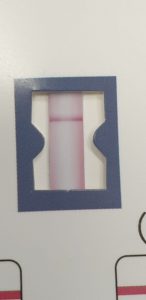

)
)
)

 Antibody)
 Tail virion protein G9P)

)
)
)
, 1.0 ML)
, 1.0 ML)


)
)
)













)


)
)
































































 Antibody)




















)
)












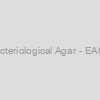














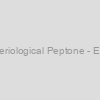



)




)


















 - Mouse YdjC homolog (bacterial) (Ydjc), (10ug))
 - Mouse YdjC homolog (bacterial) (Ydjc), (10ug))
 - Mouse YdjC homolog (bacterial) (Ydjc))


)
)
)
)
)
)
)
, partial)
 ,partial)
 ,partial)
 ,partial)
)
)
)
 Polyclonal Antibody (Mouse))

 Polyclonal Antibody (Mouse), PE)
